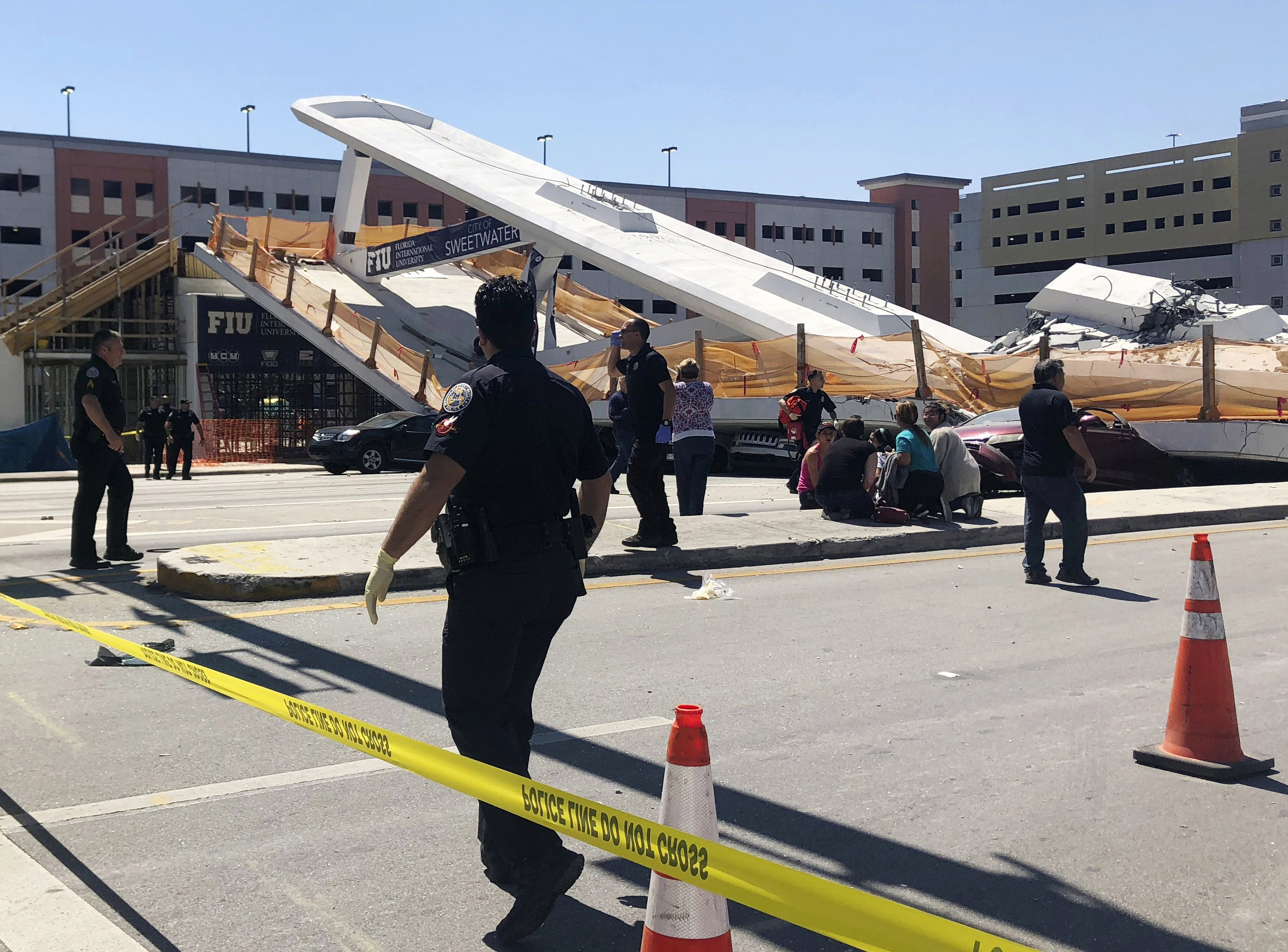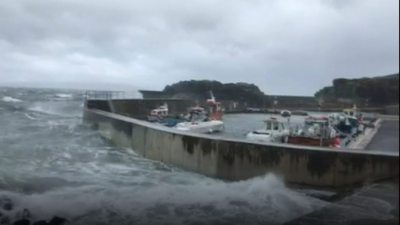
Two companies involved in building the bridge that collapsed Thursday at Florida International University have been accused of shoddy work resulting in bridge collapses in recent years.
Two companies involved in building the bridge that collapsed Thursday at Florida International University have been accused of shoddy work resulting in bridge collapses in recent years.
According to a report in the Miami New Times, lead contractor Munilla Construction Management was sued less than two weeks ago over the collapse of a “makeshift bridge” built at Fort Lauderdale-Hollywood International Airport as part of a major airport expansion.
According to a lawsuit filed March 5 in Miami-Dade Civil Court, TSA worker Jose Perez was traversing the bridge last October when it “broke under [his] weight.”
SEE ALSO: Company that built collapsed FIU bridge offers ‘thoughts and prayers’
“They built this makeshift bridge in the area where all the employees work, and it was poorly done. He fell and hurt himself really badly,” Tesha Allison, a lawyer representing Mr. Perez, told the New Times. “He had multiple broken bones and damage to his spine… They did shoddy work.”
The company that designed the bridge — Figg Bridge Engineers — had an even worse accident on a bigger project happened almost six years ago in Virginia, according to the New Times.
Four workers were injured in June 2012 when Figg-assembled span fell apart, causing “a 90-ton concrete portion of the South Norfolk Jordan Bridge to drop 40 feet onto railroad tracks below,” New Times wrote.
State regulators called it luck that nobody was killed.
“They were fortunate that the injuries were not more serious,” Jay Withrow, director of the legal support division for the Department of Labor and Industry, told the Norfolk Virginian-Pilot.
Mr. Withrow’s department fined Figg $28,000 for several violations of safety rules, though the company’s manager on that project called the violations unrelated to the completed bridge’s stability.
“The incident that occurred during construction was a construction equipment property damage issue that had nothing to do with the final bridge,” W. Jay Rohleder told the Virginian-Pilot.






